#bungay island
Photo

Front Yard in Toronto
Inspiration for a mid-sized rustic partial sun front yard mulch garden path in summer.
2 notes
·
View notes
Text
Mulch Front Yard Toronto

Inspiration for a summertime, medium-sized, rustic, mulch garden path in the front yard.
0 notes
Photo

Deck - mid-sized rustic side yard deck idea with no cover
0 notes
Photo

Mulch Landscape
Summertime photograph of a medium-sized, rustic, shaded side yard path.
1 note
·
View note
Photo

Toronto Side Yard Deck
Ideas for a medium-sized, rustic side yard dock renovation that includes an addition to the roof
0 notes
Note
Org members as cryptids
Xemnas - Ahool - enormous carnivorous bats that are said to inhabit the rainforests of Java in Indonesia. Believed to have a wingspan in excess of 10 feet (making them roughly the same size as a condor), ahools are said to be covered in a thick brown or black fur like fruit bats, but unlike bats have long, powerful legs and claws and are supposedly capable of pouncing on and snatching up live prey—including humans, if the stories are to be believed—from open ground.

Xigbar - Shuck - a huge black hound said to dwell in East Anglia, on the far eastern coast of England, having apparently attacked a church in the village of Bungay, Suffolk, during a thunderstorm in 1577. According to local records, while the villagers were sheltering from the storm in the church, a huge black dog burst through the church door, killing a man and his son, and pulling down one of the pillars supporting the church steeple, which collapsed into the nave.
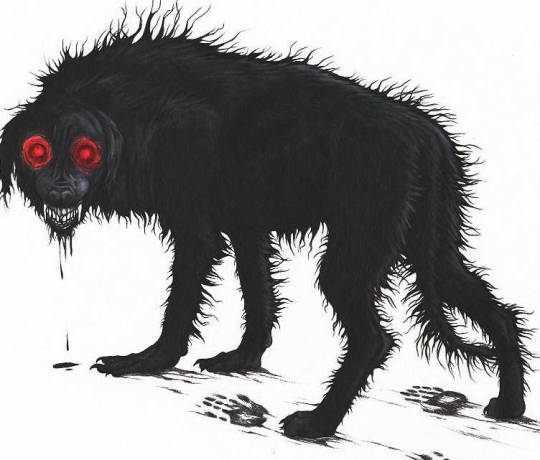
Xaldin - Yeren - a legendary creature said to reside in the remote mountainous forested regions of western Hubei. The Xinhua News Agency estimates that there have been around 400 sightings reported in the last few decades.

Vexen - Abominable Snowman - a folkloric ape-like creature taller than an average human, that is said to inhabit the Himalayan mountains. The names Yeti and Meh-Teh are commonly used by the people indigenous to the region, and are part of their history and mythology.

Lexaeus - Bigfoot - hairy, upright-walking, ape-like creatures that dwell in the wilderness and leave footprints. Depictions often portray them as a missing link between humans and human ancestors or other great apes. Over the years, these creatures have inspired numerous commercial ventures and hoaxes.
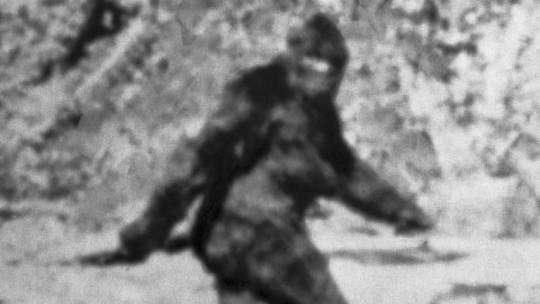
Zexion - Orang-Pendek - is the most common name given to a cryptid, or cryptozoological animal, that reportedly inhabits remote, mountainous forests on the island of Sumatra. The animal has allegedly been seen and documented for at least one hundred years by forest tribes, local villagers, Dutch colonists and Western scientists and travelers.
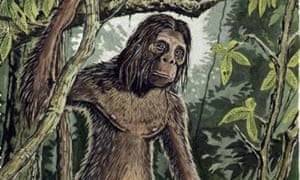
Saix - Rougarou - is a legendary creature in Laurentian French communities linked to European notions of the werewolf. The stories of the creature known as a rougarou are as diverse as the spelling of its name, though they are all connected to francophone cultures through a common derived belief in the loup-garou.

Axel - Mongolian Death Worm - apparently lives beneath the sands of the southern Gobi Desert, only coming up to the surface in the warmer summer months or when the ground becomes too wet for it to survive. Sightings of the worms date back several centuries amongst the native Mongolians, many of whom claim the olgoi-khorkhoi is able to spit venom or even acid from its mouth, while its body is apparently coated with such a toxic slime that anyone who happens to touch it will be instantly killed.

Demyx - Loch Ness Monster - In Scottish folklore, Nessie is a creature said to inhabit Loch Ness in the Scottish Highlands. It is often described as large in size with a long neck and one or more humps protruding from the water. Popular interest and belief in the creature have varied since it was brought to worldwide attention in 1933. Evidence of its existence is anecdotal, with a few disputed photographs and sonar readings.
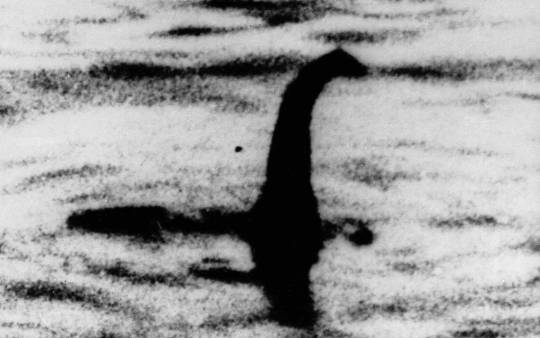
Luxord - Mothman - In West Virginia folklore, the Mothman is a creature reportedly seen in the Point Pleasant area from November 12, 1966, to December 15, 1967. The first newspaper report was published in the Point Pleasant Register dated November 16, 1966, titled “Couples See Man-Sized Bird … Creature … Something.”
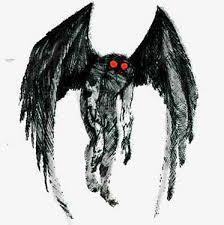
Marluxia - The Jersey Devil - In New Jersey folklore, the Jersey Devil (a.k.a. the Leeds Devil) is a legendary creature said to inhabit the Pine Barrens of Southern New Jersey. The creature is often described as a flying biped with hooves, but there are many variations.
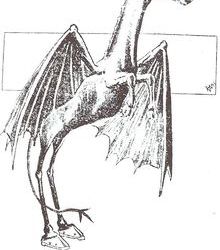
Larxene - Ozark Howler - a mythological creature that is purported to live in remote areas in Arkansas, Missouri, Oklahoma and Texas. It is typically described as being bear sized, with a thick body, stocky legs, and black shaggy hair, and as sometimes having horns.

Roxas - Agogwe - a purported small human-like biped reported in East Africa. It was reported to be 4 to 5 ft tall with brown or russet hair. The first recorded sighting was by Captain William Hichens, reported in the December 1937 edition of the journal Discovery.
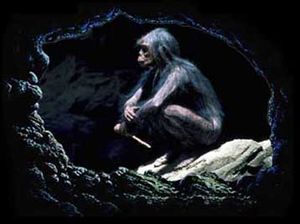
Xion - Momo - short for “Missouri monster”—is a mysterious apeman similar to Bigfoot, which is said to inhabit the forests alongside the Mississippi River as it passes through Missouri. First reported in 1971, Momo is described as 7 to 8 feet tall with a broad pumpkin-shaped head, and is supposedly covered head to foot in thick dark fur.
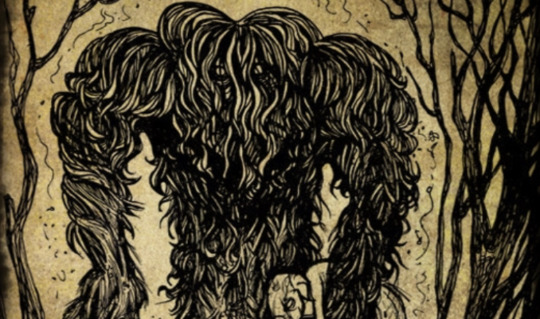
#image headcanon#organization xiii#organization xiii headcanon#kingdom hearts#kingdom hearts headcanon
39 notes
·
View notes
Text
These six LGBTQ events will have you cheering this August
August, you beautiful double-edged sword, you. You’re hot, you’re the last real month of summer, you’re buggy and beautiful. It almost feels like the rainbow flags and glitter of Pride month are but a distant memory. But don’t fear! There are still super queer things to do in the steamy month of August. Here are six events to put on your calendar, but hurry up, you don’t have much time to lose!
Charlotte Pride Week, Charlotte, NC (August 9-18)
Head on down to the (Yasss) Queen City for a week and then some of activities, festival and parade. Here in the South, we have to have our Prides later in the summer or fall because HOT, and there’s lots to enjoy in the charming city of Charlotte. Drag! A doggie fashion show! Comedy! Mixers! And that’s just a handful of the events listed. Source: NorthHalstead Events
Market Days, Chicago, IL (August 9-10)
What are you doing this weekend? Well if you are in the Chicago area, heck the Midwest, then shimmy your way down to Market Days. This two day festival is full of exciting musical performances from folks like Icona Pop, Jake Shears, and tons of local LGBTQ acts and DJs. This event is huge, drawing in over 100,000 people annually. Source: GayDays.com
Disney Gay Days, Orlando, FL (August 15-18)
Grab your Mickey ears because it’s time to paint the mouse house rainbow. Disney Gay Days has been happening since 1991, and still going strong. If you’ve ever wanted to explore Disney World AND do it with a 180,000 other LGBTQ folks, then you’ll want to put Gay Days on your calendar. There are special events, meetups, and of course, all the magic that comes along with a trip to Disney World. Source: Liz Arocena/LezVolley
LezVolley, Fire Island, NY (August 17)
If you love getting down in the sand, then you won’t want to miss the annual LezVolley tournament in the Cherry Grove section of Fire Island. An easy train ride from NYC, Fire Island is a gay destination for New Yorkers during the summer. While the island tends to skew heavily gay male, ladies rule during LezVolley. Started in 2011 by queer nightlife entrepreneurs Danielle Stanziale and Kristine Bungay, the volleyball tournament is now over 500 women and allies strong. Source” Brandi Carlile Facebook
Brandie Carlile, various cities and dates
Grammy-award winning singer/songwriter Brandi Carlile is making a pretty good case for herself in the competition for Queen of the Lesbians. Out and proud, Brandi has been making music that matters for years now, and is finally getting the mainstream recognition she deserves. This August, she’s touring all over from Edmonton, Alberta to St. Paul, Minnesota. Grab tickets while you can and experience Brandi live!
Source: aGLIFF
aGLIFF, Austin, TX (August 22-25)
The All Genders, Lifestyles, and Identities Film Festival works year round to bring LGBTQ+ content to Austin, but it’s their weekend long film fest that brings folks from everywhere. (I’m personally geeked to be attending aGLIFF as a guest to support the documentary Queering the Script. I’ll also be signing my Bella book, Savor the Moment, after the screening in collaboration with Book Woman Austin.) There are shorts, features like Vita and Virginia and Bit, plus tons of documentaries and even a tribute to filmmaker Rose Troche‘s groundbreaking 1994 film, Go Fish. You can buy a pass or individual tix now. Bonus: the films are playing at the Alamo Drafthouse, so you can enjoy a drink and a bite during the films! http://dlvr.it/R9r73j
1 note
·
View note
Link

Many of us hope to live long, fruitful and healthy lives. And some of us, in the end, are more successful at that pursuit than others. But there are several regions around the world that have been found to foster those kinds of lives more than others. At least, that’s what New York Times best-selling author and National Geographic Fellow Dan Buettner determined after studying the work of two researchers. In a study published by the Journal of Experimental Gerontology, Gianni Pes and Michael Poulain identified Sardinia as the region with the highest concentration of male centenarians. Buettner, along with a team of researchers and demographers, found other regions where they determined that people lived longer, including Okinawa, Japan; Nicoya, Costa Rica; Loma Linda, Calif.; and a small, out-of-the-way Greek island called Ikaria.
Photographer Lily Bungay became intrigued by Ikaria and decided to see what life was like for its residents. What she found was an island where people enjoy activities such as beekeeping and growing their own vegetables. Bungay says that, “Ikarians are more likely to celebrate their 100th birthday with the whole village, than to be segregated from their community. Institutional care homes do not exist on the island, but instead, every individual home is cared for.”
14 notes
·
View notes
Photo

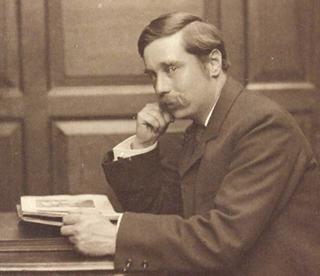


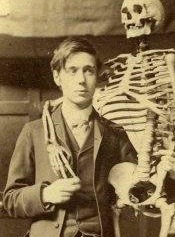
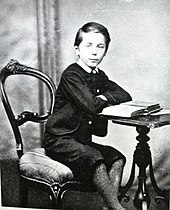
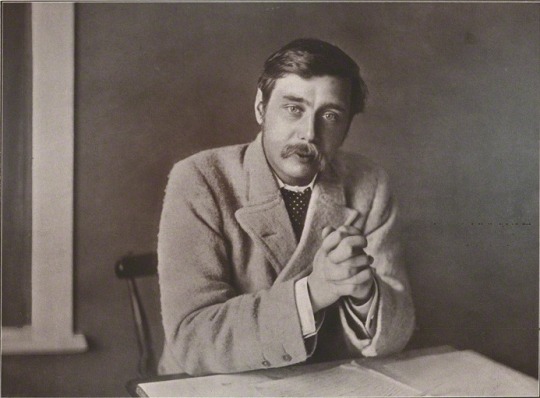

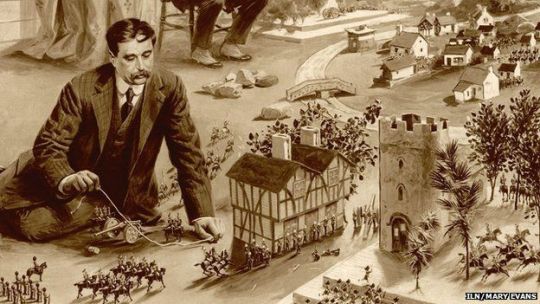

Arrivals & Departures
21 September 1866 – 13 August 1946
Herbert George Wells
Herbert George Wells was an English writer. Prolific in many genres, he wrote dozens of novels, short stories, and works of social commentary, history, satire, biography and autobiography. His work also included two books on recreational war games. Wells is now best remembered for his science fiction novels and is often called the "father of science fiction", along with Jules Verne and the publisher Hugo Gernsback.
During his own lifetime, however, he was most prominent as a forward-looking, even prophetic social critic who devoted his literary talents to the development of a progressive vision on a global scale. A futurist, he wrote a number of utopian works and foresaw the advent of aircraft, tanks, space travel, nuclear weapons, satellite television and something resembling the World Wide Web. His science fiction imagined time travel, alien invasion, invisibility, and biological engineering. Brian Aldiss referred to Wells as the "Shakespeare of science fiction", while American writer Charles Fort referred to him as a "wild talent".
Wells rendered his works convincing by instilling commonplace detail alongside a single extraordinary assumption – dubbed “Wells's law” – leading Joseph Conrad to hail him in 1898 as "O Realist of the Fantastic!". His most notable science fiction works include The Time Machine (1895), which was his first novel, The Island of Doctor Moreau (1896), The Invisible Man (1897), The War of the Worlds (1898) and the military science fiction The War in the Air (1907). Wells was nominated for the Nobel Prize in Literature four times.
Wells's earliest specialised training was in biology, and his thinking on ethical matters took place in a specifically and fundamentally Darwinian context. He was also an outspoken Socialist from a young age, often (but not always, as at the beginning of the First World War) sympathising with pacifist views. His later works became increasingly political and didactic, and he wrote little science fiction, while he sometimes indicated on official documents that his profession was that of journalist. Novels such as Kipps and The History of Mr Polly, which describe lower-middle-class life, led to the suggestion that he was a worthy successor to Charles Dickens, but Wells described a range of social strata and even attempted, in Tono-Bungay (1909), a diagnosis of English society as a whole. Wells was a diabetic and co-founded the charity The Diabetic Association (known today as Diabetes UK) in 1934.
0 notes
Text
N.S. holds public information sessions as it mulls opening adoption records
Prince Edward Island and Nova Scotia are the only two provinces that don’t have open adoption records.
P.E.I. plans to change that next month, but officials in Nova Scotia are still trying to weigh people’s right to information, versus their right to privacy.
The province is holding public information sessions to gauge interest in the idea, and at least one Nova Scotians hopes the sessions lead to a change.
Rose Valade says meeting her birth mother was a life-changing experience.
“It was literally a dream come true. I had been doing this for 38 years, almost half my life, or more than half my life,” says Valade.
“She never knew my whereabouts, if I was alive or dead, if I was a boy or girl, if I was safe. And even to our conversation last night, she says, ‘I’m so glad you’re safe.’”
While meeting her birth mother was a happy occasion, Valade says finding her presented a significant challenge.
Valade was adopted in Nova Scotia, where adoption records have always been closed.
“I felt very alone. Nobody could really help because I didn’t have any names, places, I didn’t have another source,” she says.
New Brunswick has open adoption legislation, which came into effect into effect last year. P.E.I. will introduce legislation in the new year.
It remains to be seen whether Nova Scotia will follow suit.
“That really had us reconsidering our current situation and wanting to, before we embarked on any major changes, to really understand the impact to Nova Scotians and what Nova Scotians think about that,” says Wendy Bungay with Nova Scotia Community Services.
The Nova Scotia government says it is getting a variety of opinions on the matter.
One of the main concerns is that an adopted child or birth parent could have their information made available when they don’t want it to be. In New Brunswick and P.E.I., either the biological parent or adopted child can veto information from being shared.
“So we’ve looked at each of those provinces’ individual legislation,” says Bungay.
Valade found her birth mother by completing a mail-in DNA kit -- one way people are getting around the system. Some people are also turning to social media to find their birth parents.
Valade says, what initially prompted her to start searching, was a desire to learn her medical history.
“How is it that somebody is allowed to read my file, and read all the information that I’m not allowed to see, and it’s about me?”
The Nova Scotia government has indicated it will make a decision on the file later in the spring.
The next information session will take place at the Canada Games Centre in Halifax on Saturday. Public meetings will continue next week in Truro and Dartmouth.
The deadline to complete a survey or send in a letter will be Jan. 3.
from CTV News - Atlantic https://ift.tt/36bfkAw
0 notes
Text
8 best travel books to read! | The Times of India
New Post has been published on https://apzweb.com/8-best-travel-books-to-read-the-times-of-india/
8 best travel books to read! | The Times of India
ttps://timesofindia.indiatimes.com/”http://www.w3.org/TR/html4/strict.dtd” >
8 best travel books to read! | The Times of India
TIMESOFINDIA.COM | Last updated on – May 13, 2020, 08:30 ISTShare
fbsharetwsharepinshare
01/98 Best travel books to read!
Wild greenery, splendid mountains, seamless beaches and breathtaking scenery are some vivid visuals that come straight to one’s mind upon hearing the word ‘travel’. Exploring new places and creating everlasting memories while travelling is something that everyone looks forward to. The sound of birds chirping and the music of river water lapping over rocks makes everyone appreciate the beauty of Mother Nature.
In the hustle and bustle of our fast paced lives, travelling helps us to take a break and soothe our nerves. However, it is also true that our busy lives do not always allow us to take out enough time to travel. In such times, books can help us travel places and wander around without actually going there. “I read; I travel; I become”, is what Derek Walcott (poet and playwright) once said. Thus, books have intense power in themselves to make us delve into the beauty of nature and to travel in our mind.
Here are 8 best travel books to read!
readmore
02/9‘The Rings of Saturn’ by W.G. Sebald
The book begins as the record of a journey on foot through coastal East Anglia. From Lowestoft to Bungay, Sebald’s own story becomes the conductor of evocations of different people and cultures of Chateaubriand, Thomas Browne, Swinburne and Conrad, of fishing fleets, skulls and silkworms. The result is a rich meditation on the past via a melancholy trip along the Suffolk coast, and an intricately patterned book on the transience of all things human.
Pic credit: W. W. Norton & Company
readmore
03/9‘A Movable Feast’
The book is a celebration of 38 foodie tales from around the world. It is a compilation of short stories from famous chefs, writers and foodies around the world, who all share a love of food and the power it has to bring people together.
Pic credit: Lonely Planet
readmore
04/9‘Around the World in 80 Trains: A 45,000-Mile Adventure’ by Monisha Rajesh
The book is a witty and irreverent look at the world and a celebration of the glory of train travel. It takes the readers on a route that covers 45,000 miles – almost twice the circumference of the earth – coasting along the world’s most remarkable railways- from the cloud-skimming heights of Tibet’s Qinghai railway to silk-sheeted splendour on the Venice Simplon-Orient-Express. The author offers a wonderfully vivid account of life, history and culture in a book that will makes everyone laugh out loud – and reflect on what it means to be a global citizen.
Pic credit: Bloomsbury Publishing
readmore
05/9‘The Art of Travel’ by Alain de Botton
The book is a travel guide with a difference. It delves into 2 very important questions-why we go to a place and how we might become more fulfilled by doing so. With the help of a selection of writers, artists and thinkers – including Flaubert, Edward Hopper, Wordsworth and Van Gogh – this book provides invaluable insights into everything from holiday romance to hotel mini-bars, airports to sight-seeing. It tries to explain why we really went in the first place – and helpfully suggests how we might be happier on our journeys.
Pic credit: Hamish Hamilton UK
readmore
06/9‘The Crossway’ by Guy Stagg
The book is about Guy Stagg, who in 2013, walked from Canterbury to Jerusalem. Though a non-believer, he began the pilgrimage after suffering several years of mental illness, hoping the ritual would heal him. For ten months he hiked alone on ancient paths, crossing ten countries and more than 5,500 kilometers. Travelling without support, he had to rely each night on the charity of strangers. The book offers a unique insight into contemporary faith, and lays bare the author’s struggle to escape the past and walk towards recovery.
Pic credit: Picador
readmore
07/9‘Eat Pray Love: One Woman’s Search for Everything Across Italy, India, and Indonesia’ by Elizabeth Gilbert
The book centers on Elizabeth Gilbert, a woman in her early thirties, who had everything a modern American woman was supposed to want- husband, country home, successful career. But instead of feeling happy and fulfilled, she was consumed by panic and confusion. This book is the story of how she left behind all these outward marks of success, and set out to explore three different aspects of her nature, against the backdrop of three different cultures: pleasure in Italy, devotion in India, and a balance between worldly enjoyment and divine transcendence on the Indonesian island of Bali.
Pic credit: Riverhead Books
readmore
08/9‘Jerusalem: Chronicles from the Holy City’ by Guy de Lisle
The book is a travelogue and memoir in which Delisle recounts his trip to Jerusalem, parts of Palestine and the West Bank, as well as within Israel, with his two young children and his long-term partner, Nadège. It expertly lays the groundwork for a cultural road map of contemporary Jerusalem and eloquently examines the impact of the conflict on the lives of people on both sides of the wall while drolly recounting the quotidian: checkpoints, traffic jams, and holidays.
Pic credit: RHUK
readmore
09/9‘Lands of Lost Borders: A Journey on the Silk Road’ by Kate Harris
The book is the chronicle of Harris’s odyssey and an exploration of the importance of breaking the boundaries we set for ourselves, an examination of the stories borders tell, the restrictions they place on nature and humanity, and a meditation on the existential need to explore—the essential longing to discover what in the universe we are doing here. It explores the nature of limits and the wildness of the self that can never fully be mapped. Weaving adventure and philosophy with the history of science and exploration, it celebrates our connection as humans to the natural world, and ultimately to each other.
Pic credit: Dey Street Books
readmore
Source link
0 notes
Photo

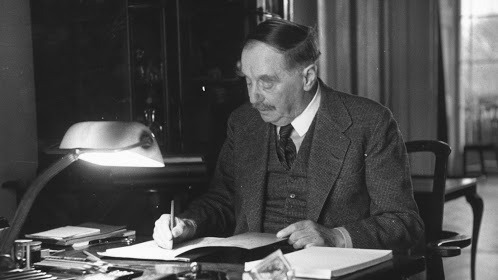
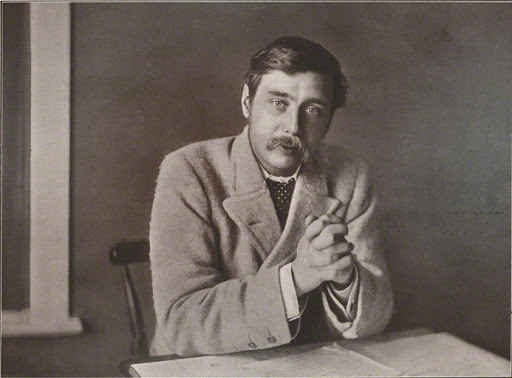
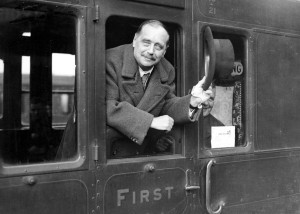
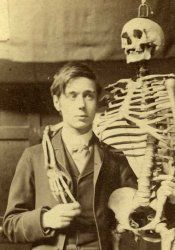
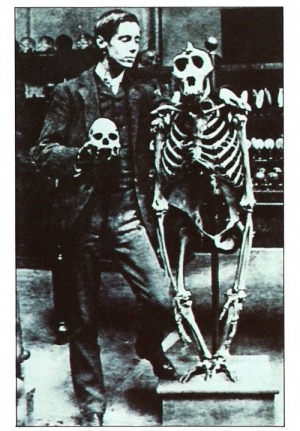
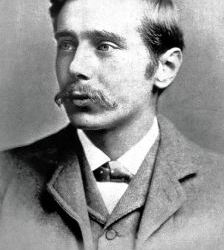
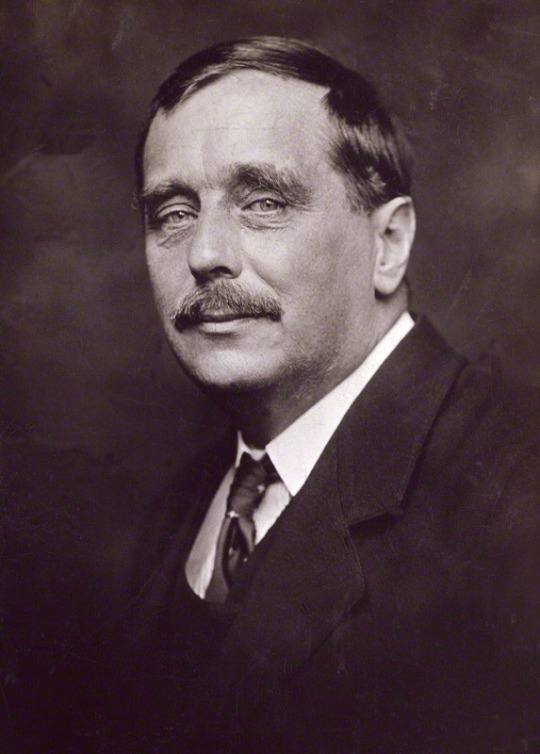

Arrivals & Departures
21 September 1866 – 13 August 1946
Herbert George Wells
Herbert George Wells was an English writer. Prolific in many genres, he wrote dozens of novels, short stories, and works of social commentary, history, satire, biography and autobiography. His work also included two books on recreational war games. Wells is now best remembered for his science fiction novels and is often called the "father of science fiction", along with Jules Verne and the publisher Hugo Gernsback.
During his own lifetime, however, he was most prominent as a forward-looking, even prophetic social critic who devoted his literary talents to the development of a progressive vision on a global scale. A futurist, he wrote a number of utopian works and foresaw the advent of aircraft, tanks, space travel, nuclear weapons, satellite television and something resembling the World Wide Web. His science fiction imagined time travel, alien invasion, invisibility, and biological engineering. Brian Aldiss referred to Wells as the "Shakespeare of science fiction". Wells rendered his works convincing by instilling commonplace detail alongside a single extraordinary assumption – dubbed “Wells's law” – leading Joseph Conrad to hail him in 1898 as "O Realist of the Fantastic!". His most notable science fiction works include The Time Machine (1895), The Island of Doctor Moreau (1896), The Invisible Man (1897), The War of the Worlds (1898) and the military science fiction The War in the Air (1907). Wells was nominated for the Nobel Prize in Literature four times.
Wells's earliest specialised training was in biology, and his thinking on ethical matters took place in a specifically and fundamentally Darwinian context. He was also from an early date an outspoken socialist, often (but not always, as at the beginning of the First World War) sympathising with pacifist views. His later works became increasingly political and didactic, and he wrote little science fiction, while he sometimes indicated on official documents that his profession was that of journalist. Novels such as Kipps and The History of Mr Polly, which describe lower-middle-class life, led to the suggestion that he was a worthy successor to Charles Dickens, but Wells described a range of social strata and even attempted, in Tono-Bungay (1909), a diagnosis of English society as a whole. Wells was a diabetic and co-founded the charity The Diabetic Association (known today as Diabetes UK) in 1934.
0 notes
Photo
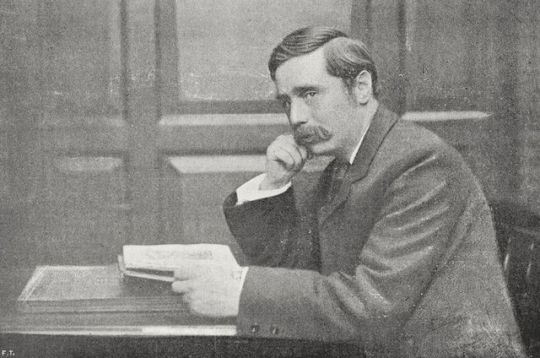
Arrivals & Departures - 21 September 1866
Celebrate Herbert George Wells Day
Herbert George Wells (21 September 1866 – 13 August 1946) was an English writer. He was prolific in many genres, writing dozens of novels, short stories, and works of social commentary, history, satire, biography, and autobiography, and even including two books on recreational war games. He is now best remembered for his science fiction novels and is often called the "father of science fiction", along with Jules Verne and Hugo Gernsback.
During his own lifetime, however, he was most prominent as a forward-looking, even prophetic social critic who devoted his literary talents to the development of a progressive vision on a global scale. A futurist, he wrote a number of Utopian works and foresaw the advent of aircraft, tanks, space travel, nuclear weapons, satellite television and something resembling the World Wide Web. His science fiction imagined time travel, alien invasion, invisibility, and biological engineering. Brian Aldiss referred to Wells as the "Shakespeare of science fiction". Wells rendered his works convincing by instilling commonplace detail alongside a single extraordinary assumption – dubbed “Wells’s law” – leading Joseph Conrad to hail him in 1898 as "O Realist of the Fantastic!". His most notable science fiction works include The Time Machine (1895), The Island of Doctor Moreau (1896), The Invisible Man (1897), The War of the Worlds (1898) and the military science fiction The War in the Air (1907). Wells was nominated for the Nobel Prize in Literature four times.
Wells's earliest specialized training was in biology, and his thinking on ethical matters took place in a specifically and fundamentally Darwinian context. He was also from an early date an outspoken socialist, often (but not always, as at the beginning of the First World War) sympathizing with pacifist views. His later works became increasingly political and didactic, and he wrote little science fiction, while he sometimes indicated on official documents that his profession was that of journalist. Novels such as Kipps and The History of Mr Polly, which describe lower-middle-class life, led to the suggestion that he was a worthy successor to Charles Dickens, but Wells described a range of social strata and even attempted, in Tono-Bungay (1909), a diagnosis of English society as a whole. Wells was a diabetic and co-founded the charity The Diabetic Association (known today as Diabetes UK) in 1934.
0 notes
Text
Member of popular P.E.I. band releases solo album
Islanders used to hearing Greg Bungay in the popular P.E.I. band Boys in the Kitchen will have a bit of a surprise with the release of his solo album fittingly called A Radical Departure.
from CBC | Prince Edward Island News https://ift.tt/2HMcYQq
0 notes
Text
Salvation Army’s kettle campaign behind on fundraising goal
It may be the season of giving, but one of the Maritimes’ favourite charities is struggling to meet it fundraising goal.
The Salvation Army's Christmas kettles appear to be everywhere. They’ve brought in $640,000 in Nova Scotia, 377,000 in New Brunswick and nearly 98,000 on Prince Edward Island. That’s $1.1 million across the Maritimes.
But Capt. Jamie Locke of the Salvation Army says that’s about $700,000 short of their goal.
“That means this week we're hoping to make up that amount so we can reach our goal of $1.9 million," says Locke.
It's a similar trend nationally. Coast to coast, the campaign is still about $9 million short of its goal.
The Salvation Army says the kettle campaign allows them to keep their doors open throughout the year, and keep community outreach vans on the road.
"One of the big things we're finding is advocating for people who are in distress and who really can't articulate their needs to the right people, so we go to bat for them," says Maj. Harold Bungay of the Salvation Army.
The Salvation Army has 23 locations in the Maritimes. In Saint John, the agency raised $172,000 last year. They’ve raised $94,000 so far this year.
Locke says one of the main problems with the campaign is that it requires cash.
"I think that most of us have moved away from cash and we're carrying credit cards and debit cards,” says Locke. “I think that contributes to what we're seeing as a shortfall in the giving right now. It takes an extra effort to go to an ATM to get some money to make a donation."
But volunteer Grattan Cosman still believes they’ll be able to reach their goal.
"We still have a few days before Christmas. There's lots of time. We're out there. If anybody sees us, if they could give a little, it's definitely appreciated," says Cosman.
"If everybody gave a little bit, that could have a huge impact."
With files from CTV Atlantic’s Mike Cameron.
from CTV News - Atlantic http://ift.tt/2BeAGlg
0 notes